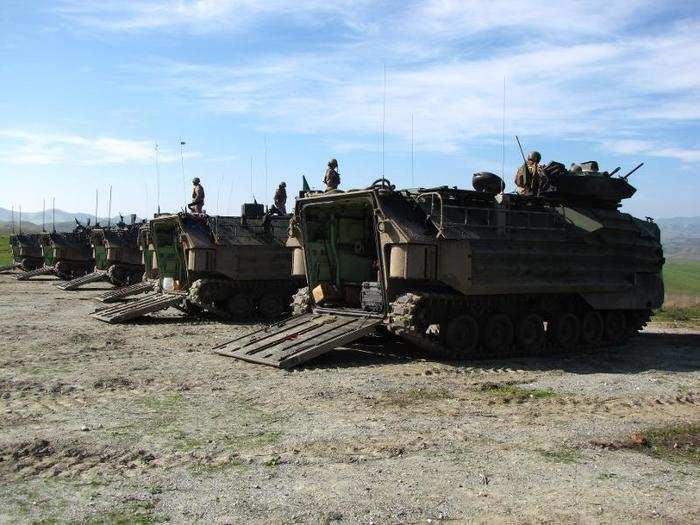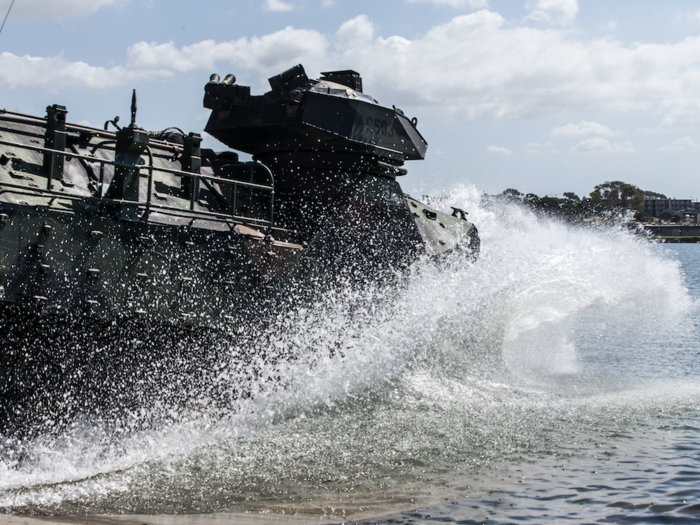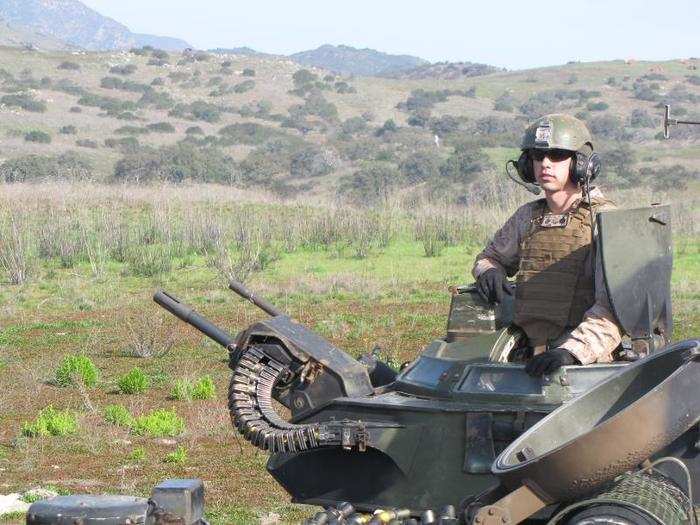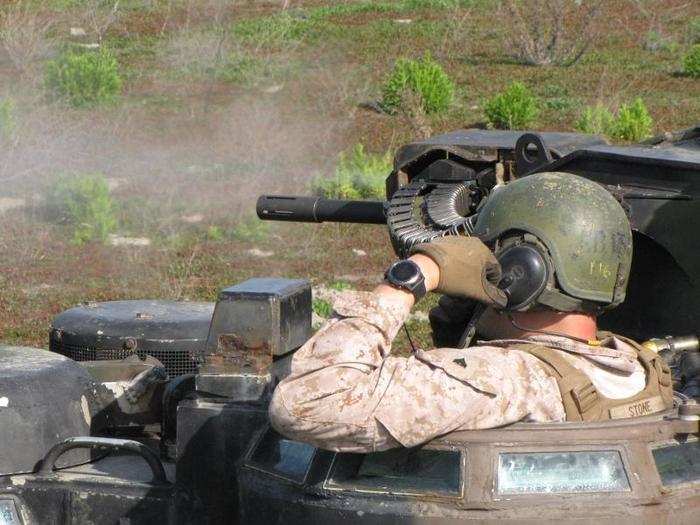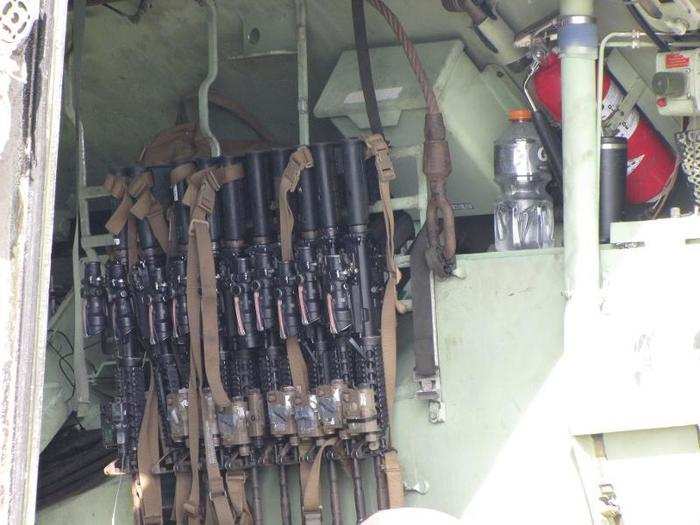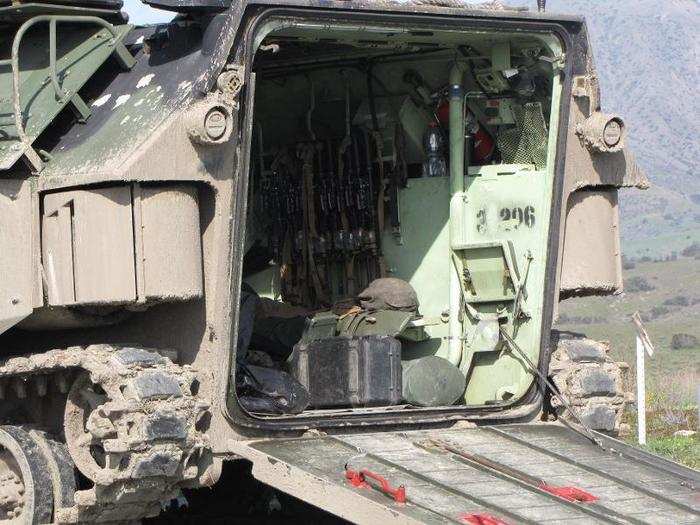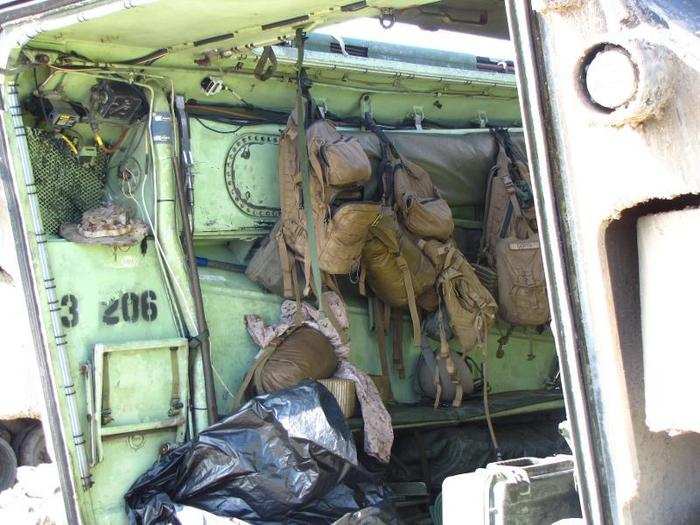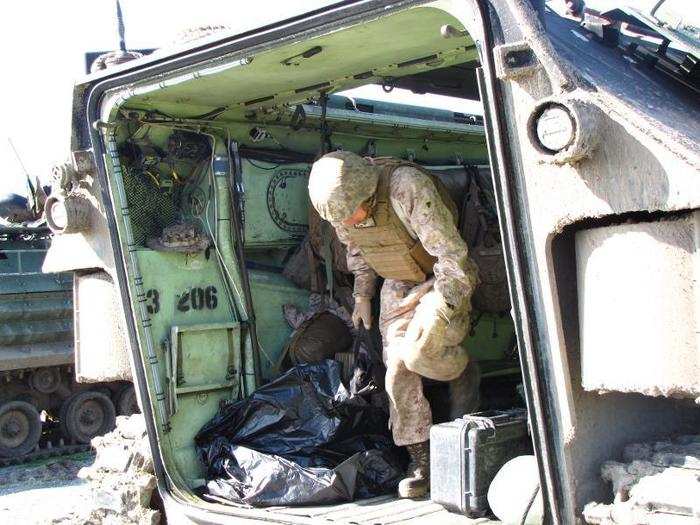Each AAV can carry around two dozen Marines and their gear.
The standard operating procedure for these vehicles is three operators — the crew chief, the driver, and the rear crewman — and 21 infantry.
The crew are sometimes referred to as "trackers."
It is currently the only operational Marine Corps vehicle capable of operating on land and in the water.
AAVs can run at a maximum speed of around 45 mph on land but only about 8 mph in the water, where they maintain an exceptionally low-profile with over 75 percent of this amphibious armored personnel carrier submerged.
The AAV has a V-8 diesel engine that powers two water jets that propel it through water. In combat, it can push through waves up to 10 feet high. The ride can be rough, and there are no seat belts. It's not uncommon for people to throw up.
AAVs are armed with significantly more firepower than the infantry units they carry ashore.
The amtracs, as the Marine's call them, are equipped with a Mk 19 40mm grenade launcher and M2HB .50-caliber machine gun, weapons operated by the crew chief.
"Those are heavy firepower assets. Infantry has nothing that compares," Pierret explained.
AAVs can be outfitted with additional weaponry as needed.
For example, the Marines have AAVs outfitted with Mk 154 Mine Clearing Line Charges (MICLICs) that can fire a rocket-propelled explosive line charge filled with C4 to eliminate mines and improvised explosive devices.
These AAVs can clear an entire lane out to a distance of about 100 yards.
In addition to these assets, the Marines inside all have their service weapons.
Each of the infantrymen riding in the AAV will dismount with their M4 service rifle.
Besides bringing extra firepower to the fight, another thing AAVs are really good for is logistics.
"They can carry supplies, ammo, MREs," Pierret told Insider, referring to the sealed Meals Ready to Eat that troops eat in the field. "An AAV is also a very good casualty evacuation platform."
On land, additional gear can be stored externally.
Marines can also live inside an AAV if necessary.
An amphibious assault vehicle is big enough to serve as an armored battle camper when necessary. Some Marines are said to call it a battle RV.
Sgt. Juan Torres Jr., a section leader, told Insider that he once lived out of an AAV for almost a month and a half. "You're out in the field," he said, "This is your home."
Marines can even shower in them.
Theoretically, there is supposed to be air circulating inside the vehicle, but when it's packed with Marines and the engine is running, it gets really hot, one Marine told Insider.
"A couple days in the field, and we're smelly," they said.
AAV crews can shower in their tracks using five gallon jugs filled with water stored in the hull. The AAV can hold up to 171 gallons of any liquid.
It takes a ton of maintenance to keep these old amtracs operational.
A few hours of training can require as much as four times as much prep work and maintenance, Torres told Insider.
"The four hours of cool stuff we get to do adds up to about 16 hours of hard work and preparation if not more," he said.

